SCS Blog Author Page
Posts by Catherine Bonesho

|
Blog: Addressing the Divide Between Ancient Near Eastern Studies and Classics
'Addressing the Divide' is a new column that looks at the ways in which the modern field of Classics was constructed and then explores ways to identify, modify, or simply abolish the lines between fields in order to embrace broader ideas of what Classics was, is, and could be. This month, Prof. Catherine Bonesho, an Assistant Professor at UCLA who specializes in the ancient history of Judaism and the Near East, speaks to classicist and Herodotus scholar Prof. Rachel Hart. Where you work—and who you work with—can make a world of difference. A good chair, a charged computer, and my books were at one point all I thought I needed in my research. However, while still a graduate student at the University of Wisconsin-Madison, I realized that it’s not just where you work or what Read more … |
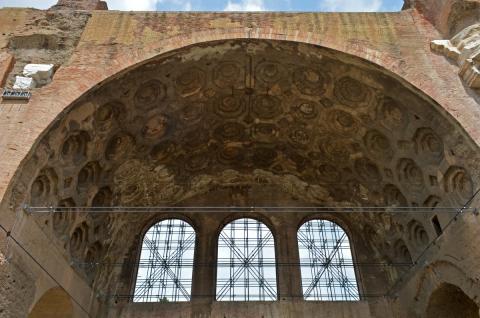
|
Blog: Inside the Roman Vault: An Interview with Lynne Lancaster of the American Academy in Rome
Lynne C. Lancaster just began her three-year appointment as the Andrew W. Mellon Professor-in-Charge of the Humanities at the American Academy in Rome. She is a Professor in the Department of Classics and World Religions at Ohio University. I recently interviewed Professor Lancaster to discuss her research and her goals for her time in Rome. C: Can you briefly tell me about your own research, both past and current? L: I started my career as an architect and became enamored of Rome on my study abroad trip to Europe in the summer of 1985. When I first saw the city I immediately knew that one of my favorite architects, Louis Kahn, had been here. He famously held up a brick and said " You say to a brick, 'What do you want, brick?' And brick says to you, 'I like an arch.' " I later learned that he had indeed been in Rome and was at the AAR in the 1950s. When I changed career paths to study archaeology, I was particularly interested in ancient construction. True Read more … |

|
Blog: Roman Festivals in Rabbinic Literature and the intersection of Judaism and Rome
Over the past year I have had the amazing opportunity of being a Rome Prize Fellow in Ancient Studies at the American Academy in Rome. In this month’s blog, as a sort of farewell to the city, I briefly discuss my own research on holidays and festivals in ancient Jewish literature and the research I completed in Rome. I also briefly describe the evidence of the intersection and interaction of Jews, Judaism, and Rome found in the city. I came to Rome to complete my dissertation entitled, “Foreign Holidays and Festivals in Rabbinic Literature,” in which I analyzed ancient Jewish, specifically ancient rabbinic, descriptions of ancient Roman holidays, including the holidays of Saturnalia and the Roman New Year Festival of the Kalends of January. Sarah Bond, Associate Professor of Classics at University of Iowa and current editor of the SCS blog has previously Read more … |
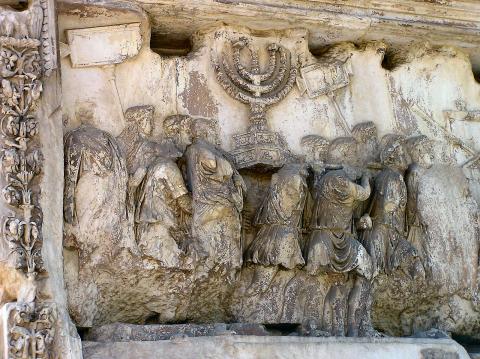
|
Blog: Sites of Memory and Memories of Conflict: Imperial Rome, Jerusalem, and Nero
The Circus Maximus, the Colosseum, and the Roman Fora. What could be more Roman? These sites typically exemplify the power of the ancient Roman Empire and its lasting impact on the modern world. These are some of the definitive sites to visit on any trip to the eternal city, but how did these sites contribute to imperial propaganda and memory? Lauren Donovan Ginsberg, Assistant Professor of Classics at the University of Cincinnati and Fellow in Ancient Studies at the American Academy in Rome and I recently organized and led a tour in Rome, entitled “Sites of Memory and Memories of Conflict: Imperial Rome, Jerusalem, and Nero,” asking just this question with the trustees of the American Academy in Rome. The Flavian dynasty, after the fall of Nero and the disastrous Year of the Four Emperors, built or added to many of modern day Rome’s most iconic buildings: the Colosseum, the Read more … |
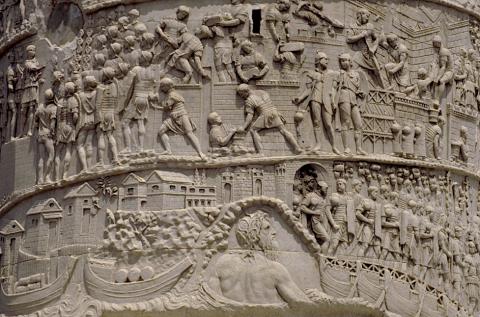
|
Blog: Roma, Amor: Inside the Column of Trajan and Under the Pantheon Oculus
In her monthly SCS column, Dr. Cate Bonesho provides a photo essay recounting her trip inside of Trajan's Column and underneath the oculus of the Pantheon during Pentecost. Living in Rome has its perks. In addition to the amazing food and constant museum visits, there are a couple opportunities that are impossible to pass up. This past week in Rome, I took part in two of these events and, in the process, was able to cross two items off of my bucket list: climbing Trajan’s Column and watching the rose petals drop from the oculus of the Pantheon on Pentecost.
The Imperial Fora from the Viewing Platform of Trajan’s Column. Image by Catherine Bonesho, unpublished. Read more … |
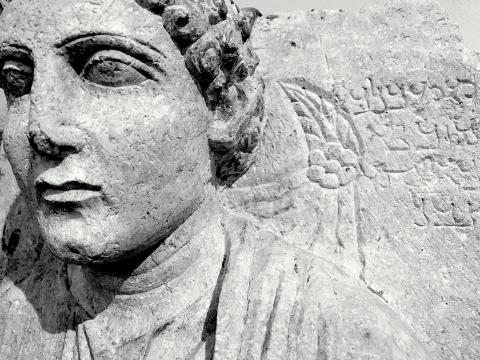
|
Blog: Preserving The Words Of Ancient Palmyra Through Digital Humanities
How can digital humanities projects within the field of Classics preserve and allow public access to endangered materials? The Wisconsin Palmyrene Aramaic Inscription Project (WPAIP) is already addressing theses question head-on. WPAIP is a digital humanities project housed at the Digital Collections of the University of Wisconsin-Madison and established by Jeremy M. Hutton. Similar to the Palmyra Portrait Project of Aarhus University in Denmark, which works to collate and digitize Palmyrene portraiture, the primary goal of WPAIP is to collate and digitize Palmyrene Aramaic inscriptions. This allows researchers to then analyze the language of Palmyrene Aramaic, the development and variations of its script, and other features. Though these inscriptions are usually from the ancient city of Read more … |
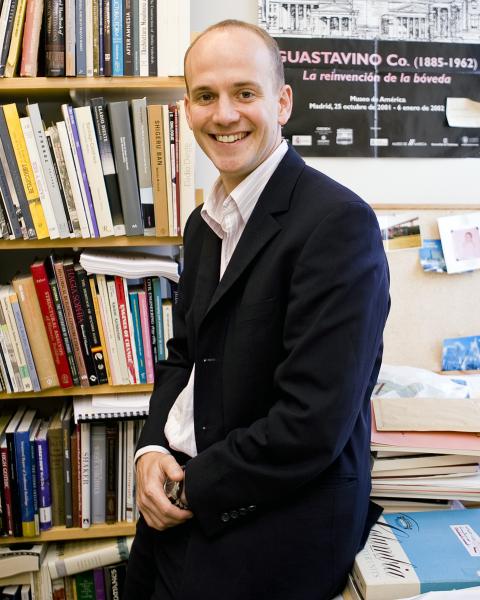
|
Blog: An Interview with John Ochsendorf, New Director of the American Academy in Rome
I recently sat down with John Ochsendorf, the new Director of the American Academy in Rome to discuss Classics, the American Academy in Rome, and his own work in historical preservation. He is the Class of 1942 Professor of Architecture and Civil and Environmental Engineering at MIT, was a Rome Prize Fellow in Historic Preservation in 2007-2008, and was named a MacArthur Fellow in 2008. CB: You’ve just begun your time at the American Academy in Rome, which has such a rich history for the study of Classics. Can you speak about Classics and Ancient Studies at the Academy? JO: For myself and many others at the American Academy in Rome, Classics is really at the heart of why we are here in Rome. Classics and Ancient Studies continue to speak to all of the fields that we have under our roof. The Academy offers programs in Classics every year such as the Classical Summer School, the Summer School in Latin Epigraphy, and the Winter School in Read more … |
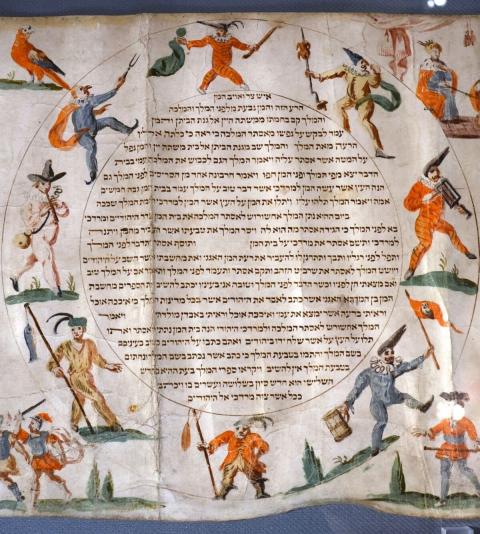
|
Blog: The Jewish Holiday of Purim in the Late Roman Empire
In her monthly column, Catherine Bonesho will feature discussions of Greco-Roman age Judaism, the Roman Near East, as well as the American Academy in Rome. For her first monthly column, she explores the Roman context for the Jewish holiday of Purim.
According to historian Amnon Linder, there are approximately 107 imperial Roman laws that concern Jews and Judaism and, for the most part, one can find them in the Theodosian and Justinianic Codes.[1] Roman imperial legislation on Jews and Judaism ranges from discussing circumcision to synagogues and the Sabbath, among other topics. However, one can also find a peculiar law, dating to the early fifth century CE, that establishes Roman policy on the Jewish holiday known as Purim. This year Purim will be celebrated at sundown on February 28. In this blog, I focus on a Roman law found in the Theodosian Code (16:8:18) that deals with the Read more … |

